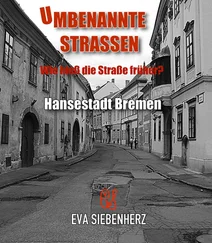Magda Goebbels: “First Lady of the Third Reich”
One such lady who often sat “at the Führer’s table,” filling the function of “First Lady of the Third Reich” at Hitler’s side during receptions, balls, and state visits, was Magda Goebbels. Since Eva Braun, as a girlfriend kept hidden from the public, obviously could not participate in such formal functions and thus never took part in any official meals at the “Reich Chancellor’s House” at 77 Wilhelmstrasse, only the wives of the highest-ranking Reich ministers were appropriate for such duties. This was particularly true for Magda Goebbels, who was attractive, elegant, and sophisticated, in the views of the time, and had a special personal relationship with Hitler as well. 22Ilse Hess, Emmy Göring, and Annelies von Ribbentrop were only replacements: they stood in for the Propaganda Minister’s wife occasionally, when she was not available.
Hitler clearly recognized quite early on the valuable public-relations qualities of Magda Quandt, as she was named when he met her. She had divorced her first husband, Günther Quandt, a major industrialist who was worth millions, and Hitler’s first meeting with her, in the spring of 1931 in the Hotel Kaiserhof in Berlin, was not an accident. Magda Quandt had arranged the encounter herself by sending her ten-year-old son Harald to the NSDAP leader’s suite in a blue costume-uniform to “report for duty to his Führer,” 23who had arrived in Berlin only that morning. The maneuver worked exactly as planned: the boy’s appearance and the ensuing conversation with Magda Quandt in the café in the hotel lobby, arranged by Goebbels, convinced Hitler that this woman could “play a great role” in his life as “the feminine antipole” to him in his work. 24
She was certainly something—or, as the saying goes in German, “you could make a country with her.” Her ex-husband, who had given Hitler financial support in his election campaigns, was firmly in the German business elite. 25She herself moved in Berlin’s high-society circles, after her divorce as much as before, and she even had international connections. In addition, she was financially independent, and had been a member of the NSDAP since September 1, 1930. Immediately after joining the Party, she had made deliberate efforts to get close to Goebbels, who at the time was Head of Propaganda for the NSDAP and Gauleiter of Berlin, and only four weeks later she was in charge of his “private archive.” 26This was at a time when the National Socialists were by no means established in the German capital, despite their success in the parliamentary elections of September 14, 1930; the NSDAP remained insignificant on the national level, and Prussian Prime Minister Otto Braun was fighting to classify the Party as seditious and ban it, preferably nationwide. The Berlin chief of police, Albert Grzesinski, formerly Prussian Minister of the Interior, banned the NSDAP Party newspaper Der Angriff on February 4, 1931, and Goebbels had to appear before Prussian judges in several slander trials. There were, in fact, conflicts within the NSDAP in this period about whether the Party should continue to pursue legal means of coming to power or should instead unleash a civil war. And despite the political violence being perpetrated by the Party and the SA, Hitler was personally working toward recognition in upper-middle-class circles, 27insisting again and again that the NSDAP did not intend any violent coup, or putsch, only the pursuit of its goals by legal means. The developing romance between Goebbels and the urbane Magda Quandt thus seemed more than opportune to Hitler, as a way to polish his Party’s image of being a mob of working-class hooligans. 28
When it comes to understanding the twenty-nine-year-old Magda Quandt’s motives for approaching the National Socialists, the existing biographies rely to a great extent on the postwar statements of contemporaries. For example, it is claimed on the basis of a reminiscence, published in a magazine in 1952, by her mother, Auguste Behrend, that in 1930 Magda Quandt was bored and looking for “a purpose in life” until she became fascinated with Goebbels as a speaker at an NSDAP election event, and spontaneously decided to become involved in National Socialism. Goebbels as a person—his charisma and his “almost eroticizing” effect—is said to be the reason why she joined the Party; his hate and his contempt for humanity were aspects of Goebbels she supposedly did not perceive. 29Albert Speer, too, who in later years was among her close friends, described Magda Quandt as a “very emotional woman, occasionally inclined toward sentimentality.” 30Elsewhere he claims that the wives of high-ranking Party members “resisted the temptations of power far more than their husbands” and regarded the “fantasy world” of their husbands with “inner reservations.” 31
But is this account really plausible? Especially with respect to Magda Quandt? Speer’s Inside the Third Reich as a whole gives the impression that his worldview barely allowed for the possibility of a woman with political convictions, never mind ambitions. He does not attribute any interest in political topics to a single woman in Hitler’s inner circle, including his own wife. In Magda Quandt’s case, the fact that she entertained a friendship with the leftist Zionist leader Chaim Arlosoroff before meeting Goebbels indicates that she was seeking a new orientation in this period, not only in her private life but also politically. 32In light of the increasing radicalization of the Weimar Republic, and despite her own insulation from the financial struggles and unemployment resulting from the Great Depression, she clearly shared with many members of her generation the view that democracy had failed in Germany and that in the future people would have to decide between the left and the right. Like many other Germans from all social classes, especially those under forty, she found her way to the NSDAP in 1930, the year of crisis, attracted by the cult of Hitler and the vague but attractive idea of a new society, a “Volksgemeinschaft” united in the struggle for territory and for the race, which would be the only way for Germans to once again attain national greatness.
Only rarely were women active members of the Party. They constituted just 7.8 percent of the members who joined between 1925 and 1932. But neither Magda Quandt’s upper-class background and high educational level, nor the fact that her stepfather, Richard Friedländer, was Jewish, deterred her from joining the loud, militant, anti-Semitic National Socialists. 33In contrast to the Weimar parliamentary politicians, who seemed boring and fossilized, the Nazis embodied a youthful, revolutionary dynamism. They offered simple answers to complicated questions and made it possible to “flee the gray everyday”—not the least of their attractions. 34
As early as February 21, 1931, Magda Quandt accompanied Goebbels to a Party event in Weimar. 35Goebbels had been named “Reich Propaganda Leader” of the NSDAP at the start of that year. At the Richard Wagner festival in Bayreuth, July 21–August 19, she was already, with Goebbels, a member of Hitler’s entourage, along with Erna Gröbke and Heinrich Hoffmann; Jakob Werlin, the chairman of Daimler-Benz AG; Hitler’s secretary Johanna Wolf; Julius Schaub; and others. 36In the years before he became Chancellor, Hitler traveled to Bayreuth only with close and trusted friends; there he indulged his passion for Richard Wagner’s operas and pledged friendship with Winifred Wagner. She had run the festival since the death of her husband, Siegfried Wagner, the composer’s son, at the start of 1931. In other words, in less than a year after joining the Party, Magda Quandt, “Goebbels’s Madame Pompadour,” had reached the innermost National Socialist circle. 37
Читать дальше












